Manipulating Objects Using the Mouse and Robot | ||||
|
| |||
Open any document with geometrical data.
The default Robot's orientation and the initial cursor shape are as follows:
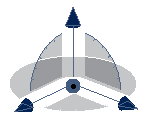
Point to the Robot's manipulation handle (the blue cube located on the privileged plane at the base of the Robot).
The cursor shape changes to a cross with arrows.
Drag the Robot.
As you drag the Robot, the cursor shape changes to
 ,
and the Robot now looks like this:
,
and the Robot now looks like this:

The square base represents the current privileged plane.The privileged plane is realigned with one of the planes on the object and is snapped to the object.
Release the mouse button to drop the Robot onto the object.
The object is selected and the Robot changes color: it takes the manipulation color (you can set this color using the Handles list).
An extra letter is added to the axes to indicate that the axes in question are no longer oriented the same way as the absolute reference axis in the bottom right corner of the screen:
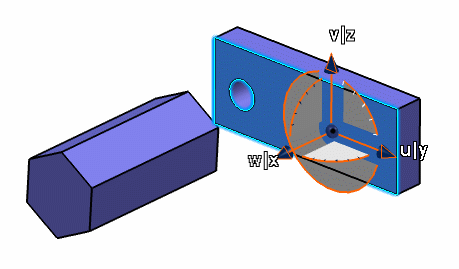
You can now begin to manipulate the object.
Important: When the Robot is snapped onto an object, the letters identifying the axes are displayed in white with a dark surround and their size is bigger for greater readability whatever the background color. This lets you see more clearly the Robot's orientation, which is especially useful when the Robot is snapped onto objects with many different colors or with many small details. Drag the X axis of the Robot to move the part to the other side of the block.
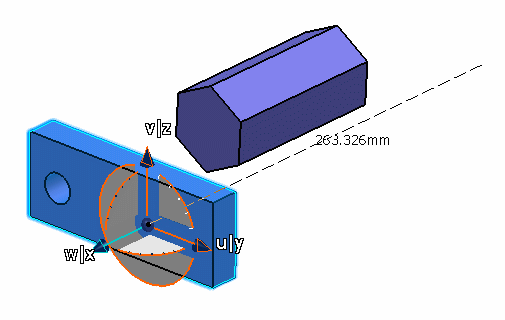
While dragging, the Robot and a representation of the part are moved.The distance from the origin of the axis (the blue cube or manipulation handle located on the base) is displayed in real time as you move the object. The value displayed will be preceded by the "-" sign (negative) if you move the object in the direction opposite to the Robot orientation.
Important: The translation increments are preset: you cannot reset the translation increments displayed. Drop the Robot to reposition the part.
The pad is now positioned approximately like this:
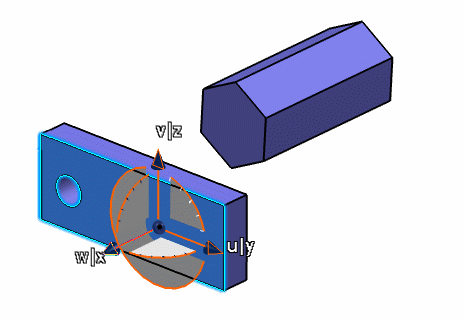
As explained in Manipulating Viewpoints Using the Mouse and Robot, you can also:
- Rotate the object in a plane (by dragging one of the arcs): the degree of rotation is also displayed in real time
- Move the object in a plane (by dragging one of the planes): the distance from the origin to the new location (along both axes in the plane) is displayed in real time
- Rotate freely about a point on the Robot (by dragging the free rotation handle at the top of the Robot)
Drag the Robot away from the selected object and drop it.
The Robot is now disconnected from the object, but maintains its orientation:
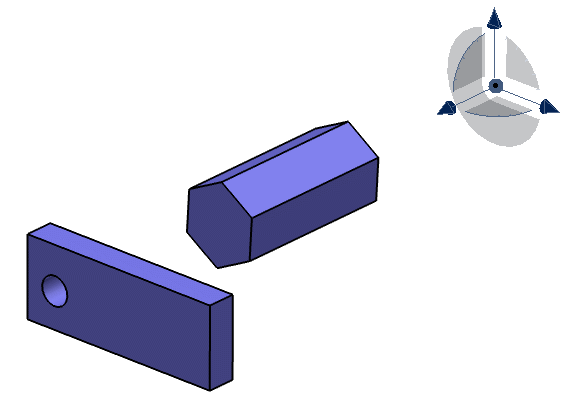
Drag and drop the Robot onto the absolute reference axis.
The Robot is reoriented the same way as the absolute reference axis and is restored to its original position in the top right corner of the document:
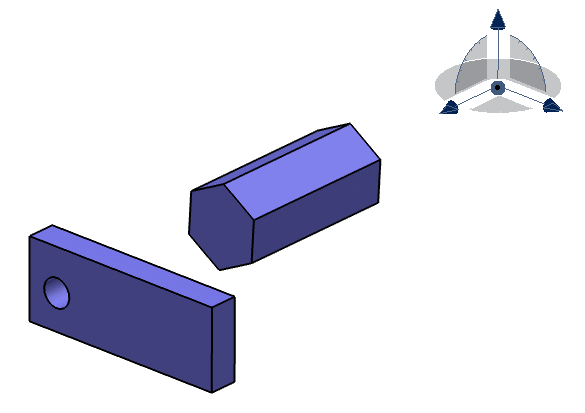
Tip:
Drag the Robot onto the pad and align it with one of the pad edges like this:
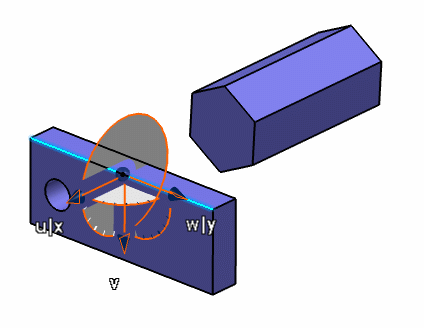
You can then select the object and drag the Robot to move the object in the same direction as the edge of the pad. This is the ideal solution for manipulating several objects at a time. To do so, select the first object, then press Ctrl and click other objects to add them to your selection.
Important: Aligning the Robot on objects that the Robot cannot manipulate is useful to detect a direction on the object for manipulating non-constrained objects.